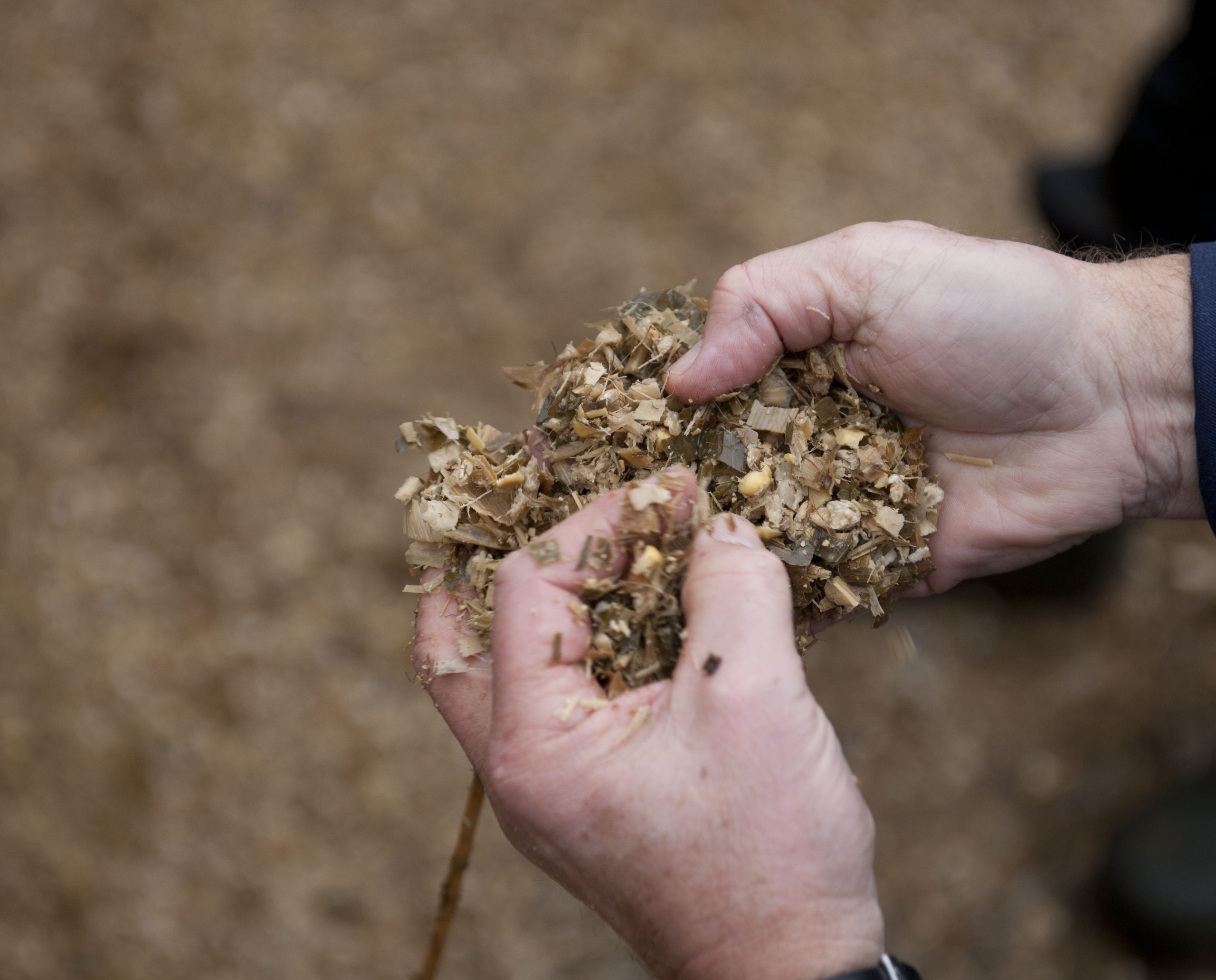The mycotoxin impact on ruminants

In this expert opinion, Timothy Jenkins gives an overview of the main mycotoxins that disrupt rumen function, impairing animal health and performance.
Mycotoxins are a very common feature of feed. Whether these toxins have been produced by fungi infecting crops in the field or by fungi contaminating feed in storage, they pose a challenge to livestock. Compared to other animals, the rumen makes a big difference to the challenges that ruminants face from mycotoxins. Some rumen microorganisms can naturally detoxify some mycotoxins, but others can turn some into more potent forms and quite a few mycotoxin types simply pass right through the rumen. Unfortunately, many mycotoxins reduce the ability of the rumen to function well.
Some DON degradation
The rumen is the powerhouse of a ruminant. The microorganisms within the rumen convert fibrous forage into a valuable source of energy, protein and other nutrients. Some of these same fibre-digesting microorganisms are also able to act on the complex chemicals of mycotoxins. Deoxynivalenol (DON), perhaps the most prevalent major mycotoxin in the world, is also susceptible to the action of some fiber-digesting rumen bacteria. This is a bonus for animals faced with the regular mycotoxin challenge in the feed, but the natural action is not always effective and not fast enough to prevent effects in the rumen itself.
The presence of DON in the feed has been correlated with significantly reduced milk production. A level of 1,000ppb of DON in the feed can for example reduce the milk output by 12 kg per day. DON (a type B trichothecene) has also been shown to affect rumen microbial processes such as reducing the availability of nitrogen (microbial N). So the effects can be seen even if there is degradation of DON over time in the rumen. The other consideration is that the amount of DON naturally degraded in the rumen depends on the activity of quite specific fibre-digesting microorganisms. Under conditions of SARA or generally high grain/concentrate and low forage, a higher proportion of trichothecenes can escape the rumen and cause damage elsewhere. Damage is again typically more obvious (including gut wall lesions) in sheep and goats, and of course in calves prior to the establishment of the rumen. Calves can struggle with scours and respiratory diseases due to the effects of trichothecenes on the immune system. In dairy cows, the damage is more likely to be subclinical or indirect issues such as effect on intestinal wall permeability (lowering the defence against pathogens and reducing nutrient uptake), reduced productivity, higher somatic cell count issues, and risk of mastitis and metritis.
Ochratoxin A
There can be an almost complete detoxification of ochratoxin A (OTA, an occasional storage mycotoxin), though A portion of OTA is known to be able to escape detoxification through rumen bypass. Up to 10% of the OTA challenge has been reported to pass through unchanged in the goat rumen (and sheep are likely to be similar). This happens to a lesser extent in cows since they have a larger rumen with a longer transit time. With high feed intake and stress factors, however, more rumen bypass can occur reducing mycotoxin breakdown.
Aflatoxin carryover
Aflatoxins are also partially degraded in the rumen and the remainder biologically converted in the liver to Aflatoxin M1 which is still bioavailable and unfortunately can carry over into the milk produced. Because of the milk safety problem of aflatoxin M1, aflatoxins receive perhaps the most attention of all mycotoxins in dairy production. Other mycotoxins are able to have a less obvious but still economically significant impact on the performance of dairy cows.
ZEN and reproduction issues
The main effect of zearalenone (ZEN) and related compounds in animals is estrogenic. The ZEN molecule fits to the estrogen receptors triggering the wrong hormonal responses and upsetting the reproductive system. ZEN is biologically converted in the rumen largely to alpha-zearalenol (α-ZOL) and this is a much more potent form that fits more easily to the estrogen receptors than ZEN itself. So ruminants are susceptible to the effects of ZEN. ZEN is also known to increase the effect of DON on the gut wall.
Ergot alkoloids
Ruminants also have a well-known susceptibility to the effects of ergot alkaloids. These can be formed either from ergots growing on cereals or from endophyte fungi within tall fescue grass. One of their main effects is vasoconstriction (restricting blood flow) which has an impact on hoof health, heat stress, mastitis and reproduction amongst other symptoms.
Silage mycotoxins
Ruminants can also face a challenge from a diversity of silage mould mycotoxins. These have been shown to reduce rumen function, cause scours and reduce milk production as well as specific symptoms according to the mycotoxin type.
Solving mycotoxins
Because of the effect of mycotoxins on rumen function and the gut wall, an effective mycotoxin deactivator (such as the EU approved mycofix) should be able to act within the rumen. Effective binding is important for aflatoxin but should be specific enough that vitamin uptake is not reduced at the rate used.
References are available on request











